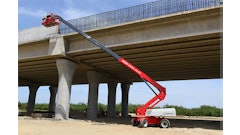Spring is in full swing, and your rental counter is likely to be full of home-owners and landscapers looking to rent lawn and grounds equipment. This can been a boon to your bottom line, but don't forget that your top priority with these customers must be safety.
Emphasizing safety will not only keep your customers alive, healthy and coming back to your store, it might even help reduce your insurance costs. While having a good safety program in place will not reduce your premiums on its own, it can improve your accident record, which can help lower your premiums.
Included in any good safety program should be the importance of conveying proper safety information to your customers.
"Rental centers should strongly urge their customers to read the owner's manual for the piece of equipment they're renting out, and make sure that the manual is included with the equipment rental," says Bill Harley, president of the Outdoor Power Equipment Institute. "[You] should also explain the operation of the equipment and the specific safety concerns with that piece of equipment."
In addition to the owner's manual, any related safety literature, if available, should be included with the rental. Also, showing short safety videos at your rental center can help customers better understand the equipment they're about to rent.
Be sure to advise your renters on personal protection equipment (PPE). Gloves, hearing protection and safety goggles are recommended for all lawn and grounds equipment. Some of your rentals will require specific PPE, such as chaps with a chainsaw or a helmet with a pole saw.
Tony Kuehn, senior risk control consultant with St. Paul Travelers, has a few more suggestions for pre-rental consultation.
"Make sure all the safety features, such as a deadman's switch, are functioning properly and have not been circumvented by the operator, and tell him or her not to disable them," he says. "Inquire about what they're going to be using the piece of equipment for - are they going to use the lawn mower to trim their hedges, or are they going to use it to cut their lawn? Also ask who will be the ultimate user - will the person standing in front of you be using the equipment or will he be giving it to a 14-year-old kid down the street?"
Kuehn adds that in some extreme cases where there is doubt about the customer's ability to safely use the equipment, it might be safest for everyone if a rental center came right out and said, "I'm not comfortable renting you this piece of equipment."
General safety tips
Although most lawn and grounds equipment is relatively easy and safe to use - manufacturers have spent years coming up with and perfecting safety features for their equipment - there are a few safety points that you should be sure to mention before each piece of lawn and grounds equipment leaves your yard.
Safety features only work when they're properly in place - do not remove or disable guards or other safety devices.
Wear close-fitting clothing. Do not wear clothing or jewelry that could get caught in machinery or underbrush. Secure hair so it is above shoulder level. Gloves offer added protection and are strongly recommended. Never wear shorts when operating any type of lawn and grounds equipment.
Hearing protection and a broad-brimmed hat or helmet are recommended.
Always wear eye protection like goggles or safety glasses.
Wear non-skid boots or shoes - never wear sandals or open-toed shoes or operate a unit while barefoot.
Make sure your work area is clear of bystanders, especially children and pets.
Read the operator's manual to find out where controls are and what they do, and always check for additional safety instructions.
Know how to stop the machine quickly.
Do not run the engine indoors; exhaust fumes are dangerous.
If you need to refuel during a job, shut off the equipment and let the engine cool off before refueling. Wipe off any spilled fuel from the unit and move the fuel container at least 10 feet away from the machine before restarting.
If the unit begins to shake or vibrate excessively, shut down immediately - this is usually a sign of a problem.
The following pages offer safety tips specific to certain types of lawn and grounds equipment. This information is not comprehensive and should not be used as a sole source of safety information for this equipment. Always refer to the operator's manual, safety manual or other safety materials provided by the equipment manufacturer.
Mowers
Today's lawn mowers have a variety of safety features that aid in the prevention of accidents. Jason Dudarenke, product manager for wheeled goods at Husqvarna, says there are several features he sees standard across the industry. "There is an operator presence switch on tractors under the seat. When you sit down, it activates that switch," he explains. "The blades won't start turning unless that system is activated."
Other features found on most ride-on mowers include a parking brake, which also acts as a safety brake; blade stoppage and shutdown when the machine is operated in reverse; and discharge testing that ensures that a deck is designed to limit the elevation and distance of any projectile. These safety features work in conjunction with the following safety rules.
Before mowing, clear the area of rocks, branches, toys, wire or other debris that could damage the machine or become a projectile.
If you hit something, stop the mower and turn it off. See if the mower is damaged before starting the machine again.
Clear the area of children and pets.
Do not put hands or feet near rotating parts or under the machine.
Do not mow in reverse.
Disengage blades when not mowing and moving across dirt or gravel surfaces.
Never discharge material toward anyone or toward a wall or obstruction.
Push mowers
Mow across a hill to avoid falls. Do not mow on a steep hill.
Keep the mower flat on the ground - never lift the mower.
Shut off engine when adjusting mower height.
Tractor-type riding mowers
Never carry passengers.
Do not use your mower for towing unless it is designed to do so - never tow people.
Always start the machine from the operator's seat.
Mow up and down small hills. Check the owner's manual for specifics on the slope degree the machine has been approved for.
Always look down and behind for people and objects before, and while, backing up.
Do not coast down a hill in neutral - you could loose control.
Slow down before turning.
Information provided by the OPEI and Husqvarna.
Chainsaws and power pruners
Today's gasoline-powered chainsaws are equipped with safety features such as a chain brake, which will stop the chain in a fraction of a second if kickback occurs, or a throttle trigger lockout, which requires a certain grip for the throttle to open up. These features, however, do not lessen an operator's need to be careful around a piece of equipment that is powerful enough to saw through wood. Many safety tips that should be followed for chainsaw operation should also be followed in power pruner operation.
Don't cut until you have a clear work area, secure footing, and a planned retreat path from the falling tree or branch.
Make sure the saw chain is not contacting anything before starting the engine.
Check that the cutting area is free of obstructions.
Do not operate a saw that is damaged, improperly adjusted or not completely and securely assembled. Make sure the saw chain stops moving when you release the throttle control trigger.
Kickback can occur when the nose or tip of the guide bar touches an object or when the wood closes in and pinches the saw chain in the cut. Tip contact could cause a lightning-fast reverse reaction, kicking the guide bar up and back toward the operator.
Pinching the saw chain along the top of the guide bar can push the guide bar rapidly back toward the operator. Either of these reactions might cause you to lose control of the saw, which could result in serious personal injury.
Keep a good, firm grip on the saw with both hands when the engine is running. Keep the right hand on the rear handle and the left hand on the front handle. Do not operate with one hand.
Cut at high engine speeds.
When cutting a limb that is under tension, be alert for springback so that you will not be struck when the tension in the wood fibers is released.
Shut off the engine before setting the saw down.
Use your saw only to cut wood or wood products. Do not cut solid metal, sheet metal, plastics or any non-wood materials.
Chainsaws
Carry the chainsaw with the engine stopped, the guide bar and saw chain to the rear, and the muffler away from your body.
Use extreme caution when cutting small-size brush and saplings because slender material can catch the saw chain and be whipped toward you or pull you off balance.
Don't overreach or cut above shoulder height.
Do not operate a saw in a tree unless you have been specifically trained to do so.
In addition to the usual PPE, wear a helmet when working with power pruners. A face shield is highly recommended.
Carry the power pruner with the engine or motor stopped, the guide bar and saw chain or blade to the front, and keep the hot muffler away from your body.
Make sure bystanders are at lease 50 feet away during operation - never let anyone hold wood for you to cut.
Do not operate a power pruner standing in a tree.
Use only one manufacturer-approved extension on your power pruner.
Stay on the uphill side when pruning as limbs might roll down hill when cut.
Information provided by the Outdoor Power Equipment. Institute and ECHO Inc.
Vacuums and blowers
While they lack the bite that is the hallmark of chainsaws, mowers and many other types of lawn and grounds equipment, vacuums and blowers require as much attention to safety as their sharp-toothed brethren. Here are some points to remember:
Keep a safe distance between two or more operators when working together simultaneously.
Don't attempt to remove materials from intake or discharge when machine is running.
Don't install or remove attachments while machine is running.
In addition to tight-fitting clothing, ear protection, eye protection and gloves, also use a face filter to avoid breathing in dust.
Keep both hands on handles when the power is on, and avoid putting hands near the air intake and air outlet chute.
Before operation, make sure all guards and deflectors are in place.
Keep hands away from rotating fan and remember that the fan coasts after the machine is turned off.
To avoid engine overheating or over-revving, keep engine recoil starter assembly, the blower intake and outlet areas clear and free of leaves or other debris.
Don't point the blower outlet in the direction of people, cars, glass or other similar items which could be harmed by blown debris.
Do not operate a vacuum without the bag attached. Before removing a bag, turn off the engine and make sure machine has come to a complete stop.
Vacuums designed for lawn and ground work are intended for grass, leaves and litter.
Keep large or hard objects from entering the machine.
Information provided by
Little Wonder.
Trimmers and brushcutters
Trimmers and brushcutters are powerful and efficient cutting machines. Harnesses, two-hand style grips, debris shields and in some cases, blade thrust barriers work together to create a safe working experience for the operator. Failure to follow the rules of operation, however, can lead to problems.
Reduce the risk of bystanders being struck by flying debris by making sure no one is within 50 feet (that's about 16 paces) of an operating unit.
Be constantly alert for objects and debris that could be thrown either from the rotating cutting attachment or bounced from a hard surface.
Always make sure the appropriate cutting attachment shield is correctly installed.
If contact is made with a hard object, such as a rock, stop the engine and inspect the cutting attachment for damage.
Be extremely careful of slippery terrain, especially during rainy weather.
Always operate the unit with both hands firmly gripping the unit.
Always wear a harness when operating a unit equipped with a blade; larger machines have a vest for added support.
When operating in rocky terrain or near electric wires or fences, use extreme caution to avoid contact with the cutting attachment.
Keep away from the rotating trimmer line or blade at all times. Never lift a rotating cutting attachment above waist height and never overreach - maintain your balance at all times.
Inspect your cutting attachment to make sure it is installed correctly and in good condition. A broken tooth could become a projectile.
Beware of blade thrust when operating a unit with a blade.
Information provided by Shindaiwa
Tillers
Like many walk-behind lawn and grounds machines, tillers are equipped with an operator presence bail, which is a lever the user must hold for the machine to work. Also make sure your muffler guard is intact to prevent burns, and that the tine shields are present for operator protection.
Do not put hands or feet near or under rotating parts.
Exercise extreme caution when operating on or crossing gravel drives, walks or roads.
After striking a foreign object, stop the engine, remove the wire from the spark plug, thoroughly inspect the tiller for any damage and repair the damage before restarting and operating the tiller.
Take all possible precautions when leaving the machine unattended. Disengage the tines, shift into neutral and stop the engine.
Before cleaning, repairing or inspecting, shut off the engine and make certain all moving parts have stopped. Disconnect the spark plug wire, and keep the wire away from the plug to prevent accidental starting. Disconnect the cord on electric motors.
Never operate the tiller without proper guards, plates or other protective safety devices in place.
Do not overload the machine capacity by attempting to till too deep at too fast a rate.
Never operate the machine at high speeds on slippery surfaces. Look behind and use care when backing.
Use only attachments and accessories approved by the manufacturer of the tiller.
Be careful when tilling in hard ground. The tines could catch in the ground and propel the tiller forward. If this occurs, let go of the handlebars and do not restrain the machine.
Information provided by Husqvarna.
Hedge clippers
One of the most basic of lawn and grounds equipment, hedge clippers can be dangerous is the hands of a careless user. Help your customers avoid injuries by following these simple rules:
Lay unit on the ground when starting.
Protect bystanders by keeping people and animals at a distance of at least 15 feet.
To avoid injury from blade contact, keep both hands on the handles when operating a hedge clipper. Never grasp exposed cutting blades of hedge clipper.
To avoid injury from blade contact when clearing jammed material, make sure engine switch is off or unplugged (for electric) and blades have stopped moving.
To avoid electrocution or shock, be aware of any and all electric lines and electric fences. Check all areas for electrical lines before cutting.
Inspect the cutting blades for cracks and make sure the blades are properly tightened according to instructions in the operator's manual.
Do not cut with dull or damaged blades.
Do not hold, or allows others to hold, the material you are cutting.
Do not attempt to remove cut material when blades are running. Put the unit down, turn it off and remove the necessary cuttings.
Use special caution when using electric hedge clippers: Do not use damaged extension cords, make sure unit is OFF before plugging it in and never operate in the rain or on wet hedges or shrubs.
Information provided by ECHO Inc.
Wedge-type log splitters
If a machine can split a log, it can do a fair amount of damage to an operator's limb.
Be sure your customers follow these instructions:
Read and understand all operational and safety instructions before using this machine.
Most accidents occur when more than one person operates the log splitter. If you are operating with an assistant, never operate the controls until he or she is at least 10 feet from the machine.
Always operate the log splitter from the indicated operator zone.
When loading the log splitter, place your hands on the sides of the log. Never place your hands or any part of your body between a log and any part of the log splitter.
When logs are not cut square, the longest portion of the log should be rotated down and placed at the wedge end.
Make sure the log splitter is on a level surface. Block the wheels securely before operating the machine to prevent unintended movement.
Never attempt to split more than one log at a time.
Split wood in the direction of the grain, never across.
Always wear safety shoes or heavy boots.
Never allow anyone to ride on the log splitter.
Heed all safety precautions associated with hydraulic fluid.
Information provided by PowerTek Inc.



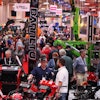
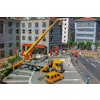

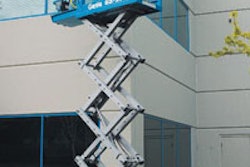
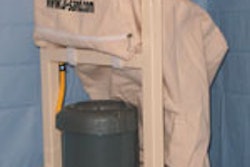


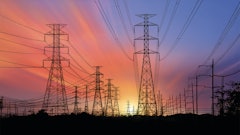

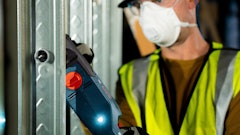

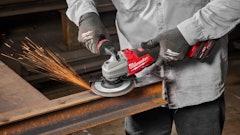



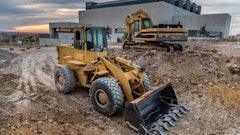
![Building Angled Sm Edit 6050b8d213f1b[1]](https://img.forconstructionpros.com/mindful/acbm/workspaces/default/uploads/2025/09/building-angled-sm-edit6050b8d213f1b1.Ygq5aAos3b.png?ar=16%3A9&auto=format%2Ccompress&crop=focalpoint&fit=crop&fp-x=0.53&fp-y=0.23&fp-z=2&h=135&q=70&w=240)
